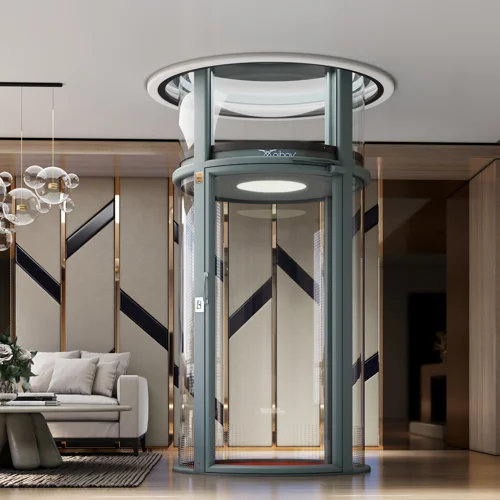No longer reserved for the extremely wealthy, home lifts are a practical solution to ensure accessibility, safety, and increased property value. This article explores how domestic lifts and affordable home lifts can increase home worth, improve convenience, and make modern living spaces inclusive for all generations.
The Modern Appeal of Home Lifts
The perception of home lifts has dramatically changed in the last decade. What once was considered high-end additions found only in mansions or commercial properties is now a feature that can be afforded by many different types of homeowners.
The demand for home lifts, which is on the rise, has come to reflect shifting priorities in the real estate market: comfort, access, and even long-term use. Nowadays, installing a lift involves more practicality than prestige with the compact and energy-efficient models available.
Home Lifts and Property Value
Among the most frequent questions that arise in a homeowner’s mind is: Do residential lifts add value to a home?
The answer is increasingly yes—especially in competitive housing markets.
Real estate experts find that a properly designed domestic lift could add resale value to a property by making it more attractive to prospective customers. A house with a lift stands out for its accessibility, more so for aging buyers or families with mobility needs.
In fact, property values often appreciate by 5% to 25% just because of a home lift installation, but this depends on the design quality, location, and overall presentation of the home. Although the figure is not certain, this shows the strong potential return of such an installation.
Accessibility and Future-Proof Living
One of the major driving factors of interest in home lifts is that of accessibility. As populations age, more homeowners are planning ahead to ensure their homes remain livable in later years.
A residential elevator allows persons and their families to continue enjoying multi-storey homes in comfort, without the threat of stairs becoming an impassable barrier. It also enables aging in place-a growing preference among older adults who wish to maintain independence.
Beyond senior living, lifts benefit households with children, heavy groceries, or frequent guests. They make day-to-day movement more convenient, reducing physical strain while improving safety for all.
Affordable Home Lifts: Where Technology Meets Value
The idea that home lifts are only for the wealthy is outdated. Advances in engineering and design have made affordable home lifts a reality that many property owners can embrace.
New lifts will involve very little space and structure modification with pneumatic or traction-based designs. Most of the models are quiet, consume less power, and can be installed without a machine room; hence, these are suitable for existing homes and smaller properties where conventional elevator systems once proved impracticable.
More importantly, better manufacturing efficiency has contributed to reduced costs in both installation and maintenance. This cannot be seen as a budget overrun for the renovation of one’s home.
Design Integration and Aesthetic Appeal
The modern home lift is not only functional but also a way to enhance interior design. Many domestic lifts boast transparent glass panels, minimalist frames, and finishes in every color to match modern architecture.
This sleek, compact lift can be a visual centerpiece, adding a modern touch to hallways or living areas. To buyers and guests alike, this perfect marriage of form and function signals considered design and attention to detail—attributes that reinforce a property’s perceived value.
Architects and designers are increasingly considering domestic lifts in new builds and renovations as part of sustainable, adaptable design rather than a luxury add-on.
Energy Efficiency and Environmental Considerations
Today’s homeowners consider the environmental impacts of their purchases more than ever, especially with regard to energy-efficient technology. Fortunately, domestic lifts have evolved to meet this demand.
Most models today run on regular household current, use a very small amount of electricity, and often have standby modes that minimize power consumption when not being used. Pneumatic lifts, as another example, rely on air pressure, rather than cables or hydraulic fluids.
Lower running costs indirectly add to home value as well-buyers recognize that modern, energy-efficient systems save money and reduce carbon footprints over time.
Installation and Practical Considerations
In home lift installation, a number of factors affect the cost as well as long-term performance:
- Type of Lift: Hydraulic, traction, and pneumatic lifts come with different costs, speeds, and maintenance requirements.
- Number of Floors: More stops raise the cost and complication in installation.
- Structural Requirements: While some lifts are designed to be installed in existing spaces with minimal construction, others require a dedicated shaft.
- Safety Standards: Modern lifts must be in compliance with all national safety codes to ensure the system is not only reliable but also safe for users.
These variables make all the difference in the overall investment, but since there are options for affordable home lifts, many installations do fall within the bounds of typical home improvement budgets.
Long-Term Financial Benefits
An in-home elevator can be considered more of a capital improvement rather than an expense. In addition to adding resale value, it improves livability and extends the useable life of the home.
A house with a lift installed tends to attract more viewers once it goes onto the market. Buyers who foresee long-term needs or appreciate convenience will often see such homes as “move-in ready,” which eliminates negotiation barriers and increases sale potential.
Furthermore, operation expenses for a modern house lift are pretty minimal compared to more classic types of elevators. Normal servicing will ensure safety and smooth operation throughout many years, thus protecting your investment.
Comfort, Safety, and Everyday Living
Home lifts bring more than dollar value; they improve quality of life. Between generations living under the same roof, it bridges the accessibility gaps and fosters independence.
They also enhance safety by reducing risks associated with stairs, especially to seniors or people recovering from injuries. For such eventualities, all modern lifts come fitted with fail-safe mechanisms and manual lowering systems so the occupants are safe even during power interruptions.
The outcome is a safer, more inclusive home environment that buyers increasingly focus on.
Conclusion
The question of whether home lifts add value to a home is best answered by considering both tangible and intangible benefits. Financially, domestic lifts can increase property value, appeal to a wider range of homebuyers, and future-proof homes. Practically, they enhance mobility, safety, and day-to-day convenience. Because of the development of affordable home lifts, access to these advantages does not have to be overly expensive. With modern lifestyles determined to make life more comfortable and accessible, domestic lifts will continue to grow in popularity, hence becoming an investment in property and peace of mind.


